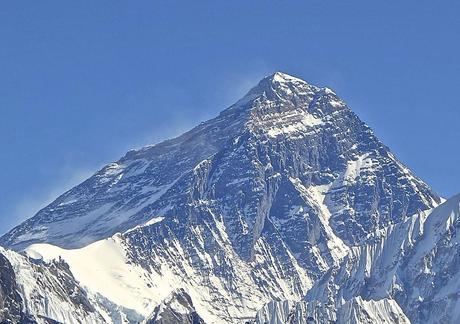 We've known for some time that the 2014 spring climbing season on Everest would be one to be remembered, but the fallout from the shutdown of the South Side of the mountain continues to play out weeks after the tragic accident that killed 16 Sherpas, and brought a premature closure of the mountain. It is likely that the repercussions from this spring will be felt for years to come, as the mountaineering community struggles to make sense of what happened, and find ways to move forward.
We've known for some time that the 2014 spring climbing season on Everest would be one to be remembered, but the fallout from the shutdown of the South Side of the mountain continues to play out weeks after the tragic accident that killed 16 Sherpas, and brought a premature closure of the mountain. It is likely that the repercussions from this spring will be felt for years to come, as the mountaineering community struggles to make sense of what happened, and find ways to move forward.If you're a regular reader of this blog, you probably already know that I've been sharing a series of articles written by Russell Brice, the owner/operator of Himalayan Experience, one of the largest and most well respected guiding companies on Everest. Over the past week, Brice has been posting these articles to the Himex website, sharing his perspective on what happened on the South Side, with details that only someone who is was there, and directly in the mix, could know. The articles have helped to fill in the blanks, and Russell doesn't pull any punches in terms of telling us exactly where the Nepali government failed in its efforts, nor how a vocal minority of Sherpas stirred up trouble. If you haven't read these previous articles, you'll find more info here, here, and here.
Today, we have the fifth, and final, article from Brice. In this post, he discusses the aftermath of the shutdown, and what occurred when he and the rest of his team returned to Kathmandu. As the head of a company that guides climbers on Everest, he has felt a responsibility to look out for the best interest of his clients, while at the same time the government and Sherpas continue their own personal battle.
The latest article doesn't share much that we didn't already know, although Brice reiterates how Chinese climber Jing Wang got him into hot water with the Nepali government by continuing her climb up Everest after the closure. She was originally on the Himex permit, and officials in Nepal tried to hold Brice responsible for her actions, even though he had already left the mountain, and returned to New Zealand. This is symbolic of how disorganized and out of control the situation is there.
Russell wraps up his final post by outlining some actions that should be taken to improve the situation there. Those include overhauling the Ministry of Tourism from the top to the bottom, and taking steps to ensure that the Sherpas are well cared for. He isn't especially optimistic that those steps will be taken.
Also posting a season recap yesterday was Alan Arnette, who shares his thoughts on Everest in his usual insightful fashion. Alan tries to make sense of the season as well, and draws on his many sources in Nepal, and elsewhere, to help put a coherent picture together as to what exactly happened on the South Side. Alan's piece, which you can read here, is probably the most thorough and comprehensive single article that I've seen on the subject to date.
The article is a lengthy one, but it also very fair and even handed. Alan discusses the "new generation" of Sherpas who are more vocal than their predecessors, and are struggling to control the future of climbing on Everest. He takes on the hot-button topic of Sherpa exploitation, and holds the Ministry responsible for some questionable decisions that eventually led to the closure of the mountain. He shares some thoughts from foreign climbers and guides who were there, and provides his thoughts on how to reduce risks on both Sherpas and climbers moving forward.
As I said, Alan's article is about has comprehensive as you'll find on the subject right now, and it is well worth a read for anyone who has an interest in Everest, or the mountaineering community. We'll likely be sifting through the proverbial rubble from this season for years to come, but now that it has passed completely, we're starting to make sense of what occurred in Nepal this spring, and discussing ways to move forward. Make no mistake, there are no easy answers to the numerous problems that the Everest climbing community faces, but at least the dialog has begun.
The Ministry of Tourism in Nepal but find a way to work with the Sherpas, who in turn must find a way to move forward without alienating their clients. But that is just the tip of the iceberg. There are still issues with overcrowding, the environmental impact of climbing, and the drastic changes that are taking place on the mountain due to climate change. The future of climbing on Everest hasn't been this uncertain for decades, and there are a lot of hurdles to clear moving forward.
Considering the track record of the Nepali government in tackling these issues, I don't know if we'll see any tangible change anytime soon. Remember, there were some changes proposed this season, such as having more liaison officers in Base Camp. And while those promises were made prior to the start of the season, they turned out to be empty ones when put into practice. With so much money at stake, Nepal needs to find a way to work through these issues. I'm just not confident that will happen this year or next, and we might see even more disruptions in the future.

